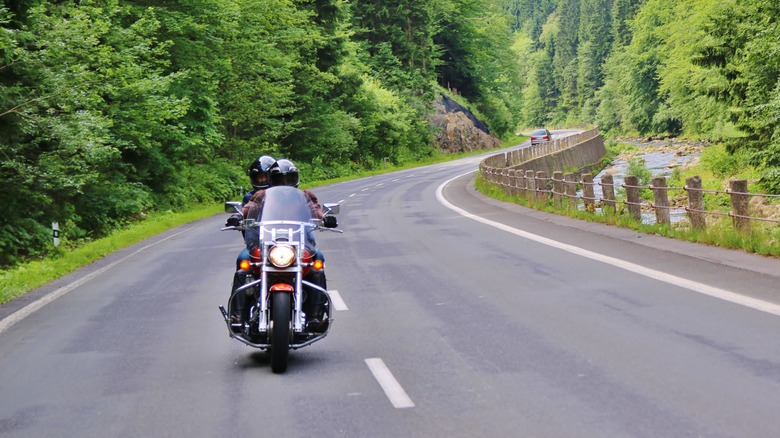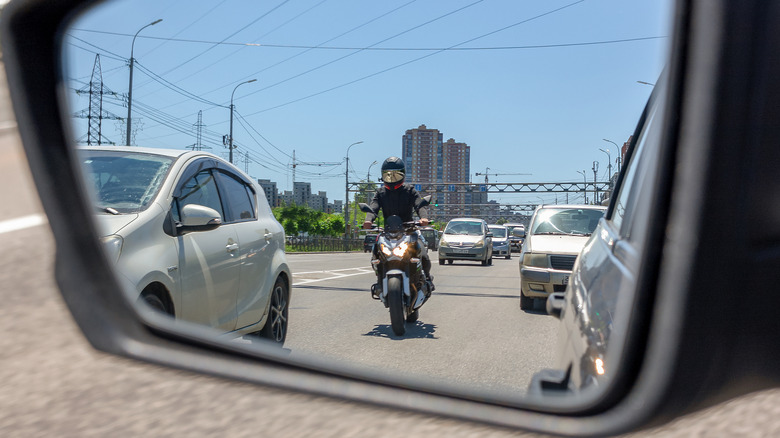Why Do Motorcyclists Sometimes Swerve In Their Lane?
To many drivers — particularly those with no motorcycle experience — the actions of motorcycle riders might seem bizarre. Even enigmatic. The thing is, this makes sense when you really think about it.
Motorcycle riders aren't protected by a large metal frame or airbags. They're basically just straddling an engine with a pair of wheels attached to it. Which means riders have to take extra precautions and perform additional actions while on the road. It's why they utilize a large variety of motorcycle hand signals (which benefit themselves, fellow riders, and other drivers), after all.
It's also why you might sometimes spot a rider swerving around in their lane. Most say "swerving," but in actuality it's often an intentional maneuver to keep the rider and those around them safe. Major motorcycle brands might sell some reliable models but, again, the rider is just sitting on top of an engine with wheels. Often while traveling at highway speeds. Once you look at things from their perspective a bit more, it all starts to make sense.
Vive la swerve!
Unless you're the one behind the throttle, you might not be able to tell at a glance why a rider might be swerving in their lane. However, there are a few logical explanations for it — the practice is often taught in motorcycle safety courses as well.
Something we as drivers may forget is that motorcycle riders are facing statistically larger risks on the road. For example, the small debris or even clusters of dirt that cars can easily ignore are a potential hazard, and a rider may have to swerve to avoid running into or over it. Additionally, strong wind (either weather conditions or from passing vehicles) can and will affect motorcycle riders, so they have to compensate to avoid being pushed into anyone else or otherwise try to avoid those pockets of fast-moving air.
Visibility is another significant factor when it comes to motorcycle swerves. Occasionally changing lane positions creates motion, which makes bikes easier to see — or rather, makes it more difficult for drivers to "not see" them. By the same token, riders will need to shift around at times in order to stay out of a larger vehicle's blind spot.

